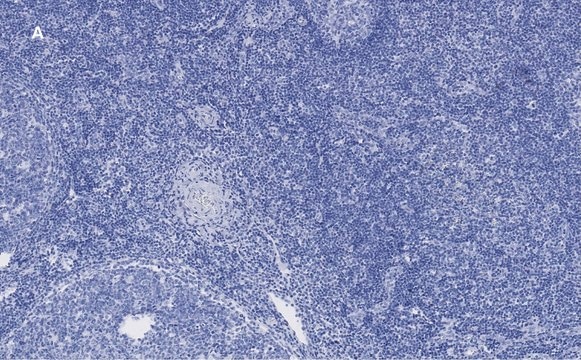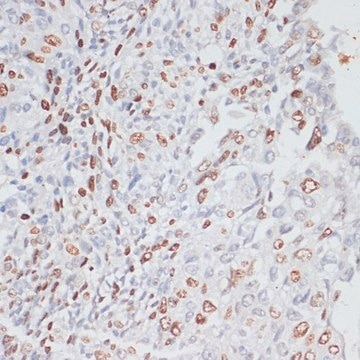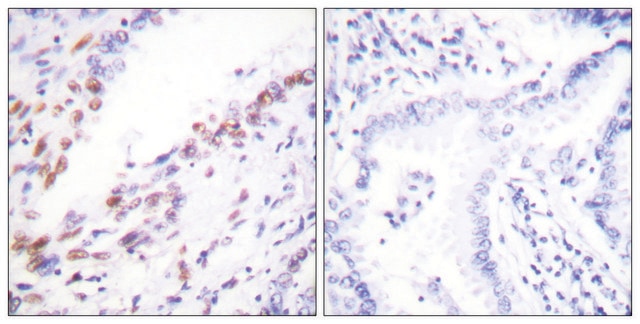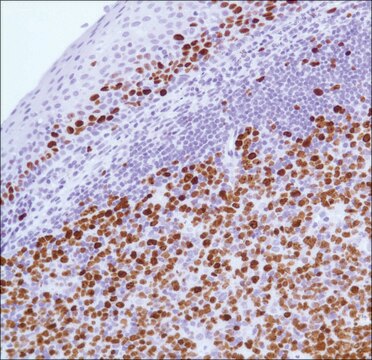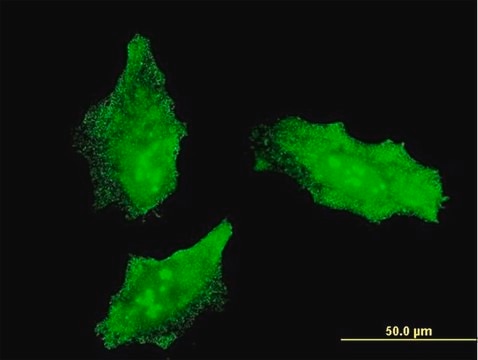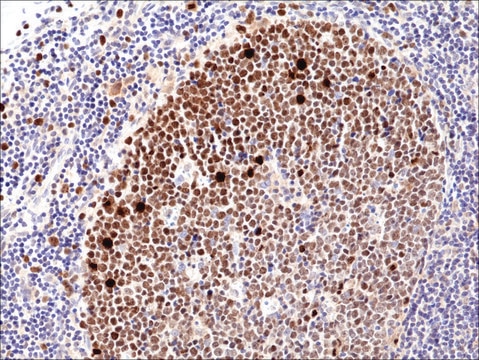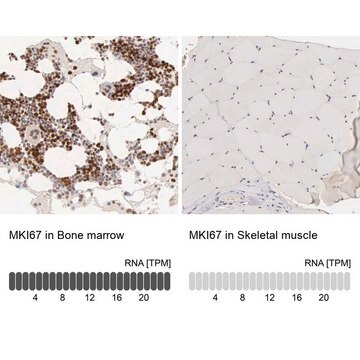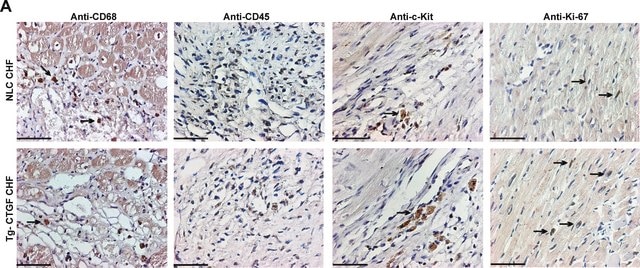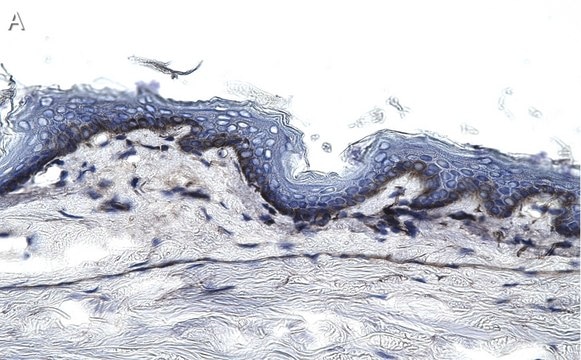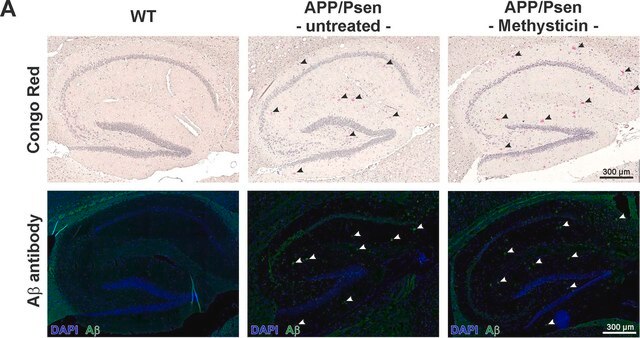General description
We are committed to bringing you greener alternative products, which adhere to one or more of The 12 Principles of Green Chemistry.This antibody is Preservative-free, produced without the harm or sacrifice of animals and exceptionally stable to allow for ambient shipping and storage if needed and thus aligns with "Waste Prevention", "Designing Safer Chemicals" and "Design for Energy Efficiency".
Click here for more information.
ZooMAb® antibodies represent an entirely new generation of recombinant monoclonal antibodies.Each ZooMAb® antibody is manufactured using our proprietary recombinant expression system, purified to homogeneity, and precisely dispensed to produce robust and highly reproducible lot-to-lot consistency. Only top-performing clones are released for use by researchers. Each antibody is validated for high specificity and affinity across multiple applications, including its most commonly used application. ZooMAb® antibodies are reliably available and ready to ship when you need them.
Specificity
Clone Ki-S5 is a ZooMAb® Mouse recombinant monoclonal antibody that specifically detects Ki-67 protein.
Immunogen
Full-length native nuclear protein from human cell line U937.50.
Application
Quality Control Testing
Evaluated by Immunohistochemistry (Paraffin) in human tonsil tissue sections.
Immunohistochemistry (Paraffin) Analysis: A 1:100 dilution of this antibody detected Ki-67 in human tonsil tissue sections.
Tested Applications
Immunohistochemistry (Paraffin) Analysis: A 1:100 dilution from a representative lot detected Ki-67 in human skin tissue sections.
Immunocytochemistry Analysis: A 1:100 dilution from a representative lot detected Ki-67 in A431, HeLa, and HepG2 cells.
Flow Cytometry Analysis: 0.1 μg from a representative lot detected Ki-67 in one million HeLa cells.
Note: Actual optimal working dilutions must be determined by end user as specimens, and experimental conditions may vary with the end user.
Target description
Proliferation marker protein Ki-67 (UniProt: P46013; also known as Antigen identified by monoclonal antibody Ki-67, KI-67, Ki67) is encoded by the MKI67 gene (Gene ID: 4288) in human. Ki-67 antigen is the prototypic cell cycle related nuclear protein that is expressed by proliferating cells in all phases of the active cell cycle. In the G1 phase it is predominantly localized in the perinucleolar region and in the later phases it is also detected throughout the nuclear interior, being predominantly localized in the nuclear matrix. Its levels are shown to be the highest in the G2 phase and during mitosis. Ki-67 is routinely used as a marker of cell cycling and proliferation. It is required to maintain individual mitotic chromosomes dispersed in the cytoplasm following nuclear envelope disassembly. It is shown to associate with the surface of the mitotic chromosome, the perichromosomal layer, and covers a substantial fraction of the chromosome surface and prevents chromosomes from collapsing into a single chromatin mass by forming a steric and electrostatic charge barrier. Ki67 binds DNA, with a preference for supercoiled DNA and AT-rich DNA. It undergoes phosphorylation and is hyperphosphorylated in the mitosis phase. The hyperphosphorylated form fails to bind DNA. Ki-67 contains an N-terminal forkhead-associated (FHA) domain (aa 27-76), a protein phosphatase 1 (PP1) binding domain (aa 502-549), a large central region comprising 16 tandem repeats, and a C-terminal leucine/arginine-rich chromatin-binding (LR) domain. Ki-67 interacts with kinesin-like motor protein Kif15 and a nucleolar protein NIFK (Nucleolar Protein Interacting with the FHA domain of MKI67) via its FHA domain to promote cell proliferation and tumor metastasis. This ZooMAb® recombinant monoclonal antibody, generated by our propriety technology, offers significantly enhanced specificity, affinity, reproducibility, and stability over conventional monoclonals. (Ref.: Sun, X., and Kaufman PD. (2018). Chromosoma. 127(2); 175-186; MacCallum, DE., and Hall, PA. ( 2000). J. Pathol. 191(3); 286-298).
Physical form
Purified recombinant mouse monoclonal antibody IgG, lyophilized in PBS with 5% Trehalose, normal appearance a coarse or translucent resin. The PBS/trehalose components in the ZooMAb formulation can have the appearance of a semi-solid (bead like gel) after lyophilization. This is a normal phenomenon. Please follow the recommended reconstitution procedure in the data sheet to dissolve the semi-solid, bead-like, gel-appearing material. The resulting antibody solution is completely stable and functional as proven by full functional testing. Contains no biocide or preservatives, such as azide, or any animal by-products. Larger pack sizes provided as multiples of 25 μL.
Reconstitution
30 μg/mL after reconstitution at 25 μL per vial. Please refer to guidance on suggested starting dilutions and/or titers per application and sample type.
Storage and Stability
Recommend storage of lyophilized product at 2-8°C; Before reconstitution, micro-centrifuge vials briefly to spin down material to bottom of the vial; Reconstitute each vial by adding 25 μL of filtered lab grade water or PBS; Reconstituted antibodies can be stored at 2-8°C, or -20°C for long term storage. Avoid repeated freeze-thaws.
Legal Information
ZooMAb is a registered trademark of Merck KGaA, Darmstadt, Germany
Disclaimer
Unless otherwise stated in our catalog or other company documentation accompanying the product(s), our products are intended for research use only and are not to be used for any other purpose, which includes but is not limited to, unauthorized commercial uses, in vitro diagnostic uses, ex vivo or in vivo therapeutic uses or any type of consumption or application to humans or animals.

